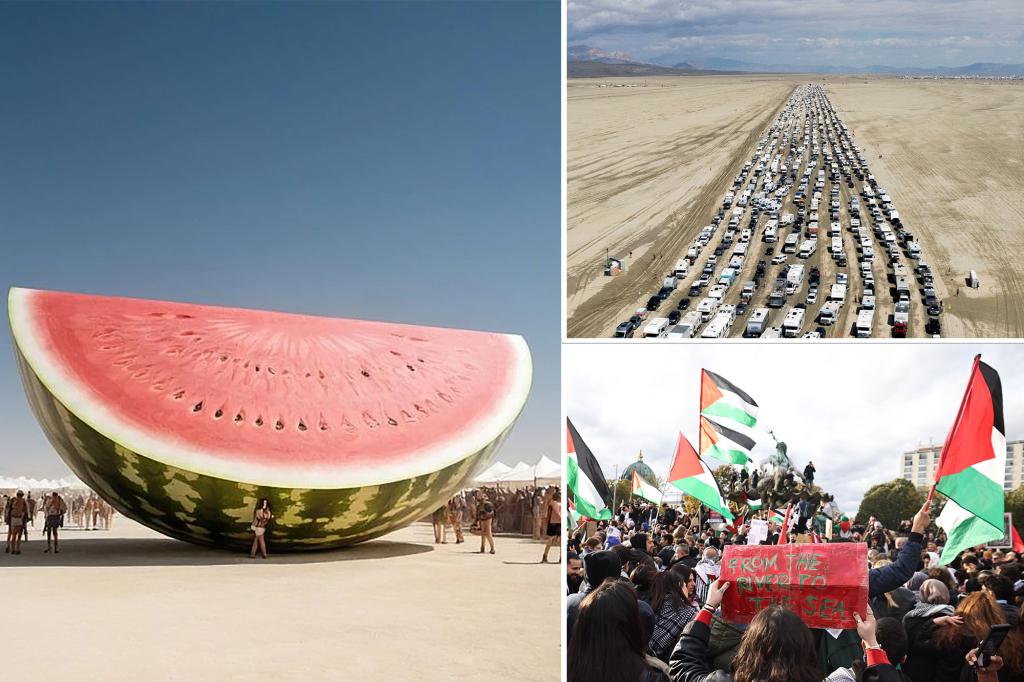The Burning Man festival faced controversy after a massive pro-Palestine sculpture was removed from the list of art installations set to be displayed at the gathering this summer. The sculpture, titled “From the River to the Sea,” was an 8-foot-by-14-foot fiberglass watermelon that garnered backlash from over 1,000 people who signed an online petition demanding its removal. The phrase “From the River to the Sea” was seen as promoting violence against Jewish people and denying the Jewish state’s right to exist, leading to calls for its removal from the festival.
The phrase “From the River to the Sea” is commonly used among anti-Israel protesters since the start of the conflict in October. The original listing on the Burning Man website claimed that the watermelon sculpture became symbolic because it shared the same colors as the Palestinian flag, which was banned from Israel in 1967. It was attributed to the group “Decolonize Now” and was said to come directly from Gaza. However, organizers of Burning Man stated that the sculpture was likely not going to be part of the festival based on the circumstances surrounding its listing, which they believe was intended to provoke an emotional response.
After the sculpture was removed from the Burning Man website, supporters of Palestine flooded the festival’s social media platforms. Some accused Burning Man of censorship and of bowing down to Zionists. Despite the controversy, the week-long desert rave festival aims to create a global ecosystem of artists, makers, and community organizers who come together to co-create art, events, and local initiatives around the world. Burning Man promotes radical self-expression and radical inclusion among its participants.
The backlash against the pro-Palestine sculpture being listed at Burning Man highlights the ongoing tensions surrounding the Israel-Palestine conflict and the impact of political statements in art. The festival, known for its celebration of freedom and acceptance, was put under scrutiny for its perceived promotion of hate and antisemitism. The removal of the sculpture from the festival’s lineup raises questions about the boundaries of artistic expression and political activism within the context of a large-scale event like Burning Man.
The controversy surrounding the sculpture and its eventual removal from the Burning Man lineup serves as a reminder of the importance of considering the implications of art and political statements in public spaces. The power of art to provoke thought, inspire change, and challenge societal norms is evident in the response to the pro-Palestine sculpture. The debate surrounding the sculpture reflects broader discussions about freedom of expression, censorship, and the intersection of art and politics in our society.
Ultimately, the removal of the pro-Palestine sculpture from the Burning Man festival lineup highlights the complexity of addressing politically sensitive topics in art and public spaces. The decision to remove the sculpture was met with both support and criticism, underscoring the challenges faced by organizers in balancing artistic expression with social and political considerations. As Burning Man moves forward with its annual gathering, the controversy surrounding the sculpture serves as a reminder of the power of art to provoke dialogue, challenge perspectives, and raise awareness of important social issues.













